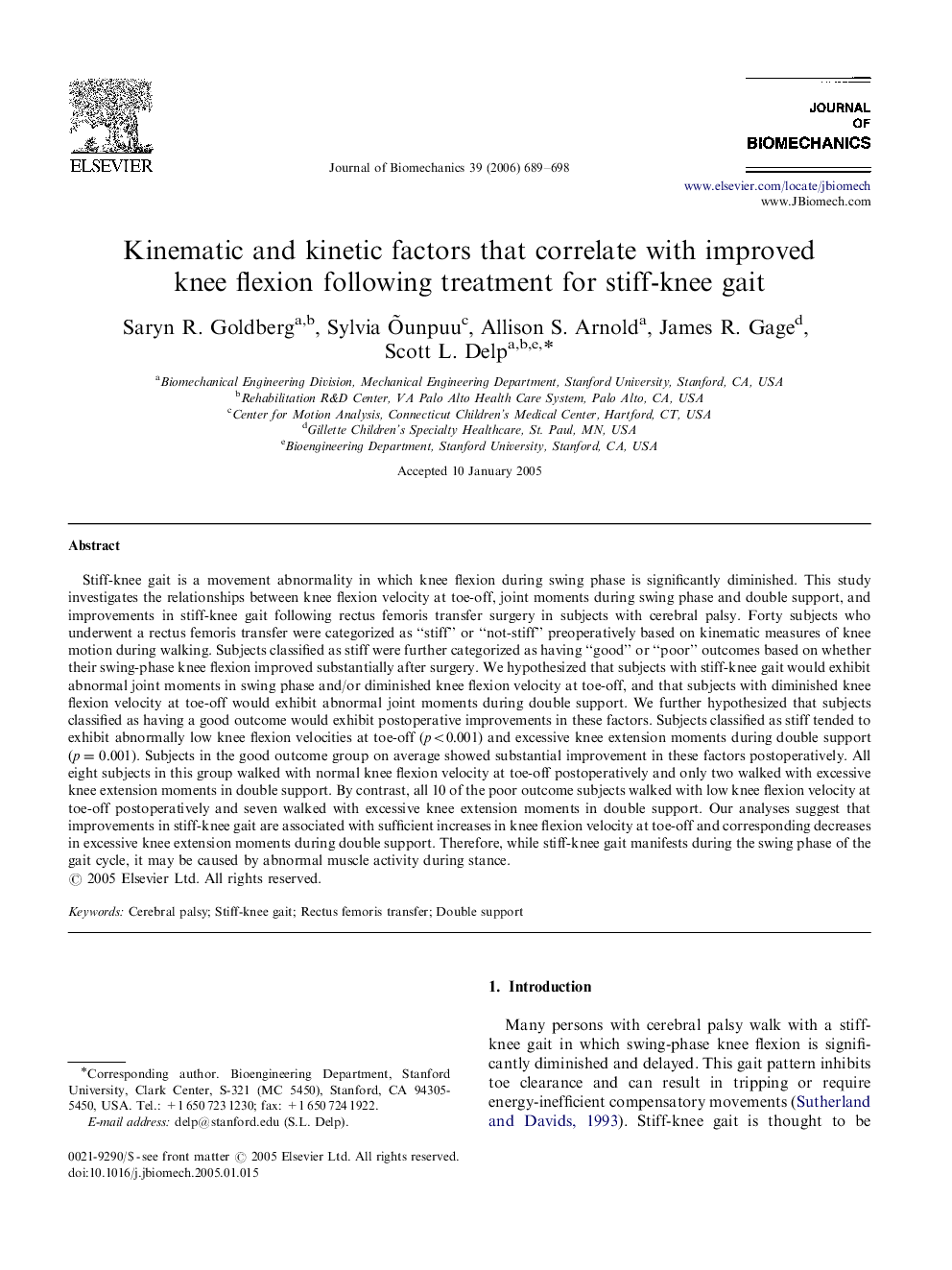| کد مقاله | کد نشریه | سال انتشار | مقاله انگلیسی | نسخه تمام متن |
|---|---|---|---|---|
| 875196 | 910364 | 2006 | 10 صفحه PDF | دانلود رایگان |

Stiff-knee gait is a movement abnormality in which knee flexion during swing phase is significantly diminished. This study investigates the relationships between knee flexion velocity at toe-off, joint moments during swing phase and double support, and improvements in stiff-knee gait following rectus femoris transfer surgery in subjects with cerebral palsy. Forty subjects who underwent a rectus femoris transfer were categorized as “stiff” or “not-stiff” preoperatively based on kinematic measures of knee motion during walking. Subjects classified as stiff were further categorized as having “good” or “poor” outcomes based on whether their swing-phase knee flexion improved substantially after surgery. We hypothesized that subjects with stiff-knee gait would exhibit abnormal joint moments in swing phase and/or diminished knee flexion velocity at toe-off, and that subjects with diminished knee flexion velocity at toe-off would exhibit abnormal joint moments during double support. We further hypothesized that subjects classified as having a good outcome would exhibit postoperative improvements in these factors. Subjects classified as stiff tended to exhibit abnormally low knee flexion velocities at toe-off (p<0.001p<0.001) and excessive knee extension moments during double support (p=0.001p=0.001). Subjects in the good outcome group on average showed substantial improvement in these factors postoperatively. All eight subjects in this group walked with normal knee flexion velocity at toe-off postoperatively and only two walked with excessive knee extension moments in double support. By contrast, all 10 of the poor outcome subjects walked with low knee flexion velocity at toe-off postoperatively and seven walked with excessive knee extension moments in double support. Our analyses suggest that improvements in stiff-knee gait are associated with sufficient increases in knee flexion velocity at toe-off and corresponding decreases in excessive knee extension moments during double support. Therefore, while stiff-knee gait manifests during the swing phase of the gait cycle, it may be caused by abnormal muscle activity during stance.
Journal: Journal of Biomechanics - Volume 39, Issue 4, 2006, Pages 689–698